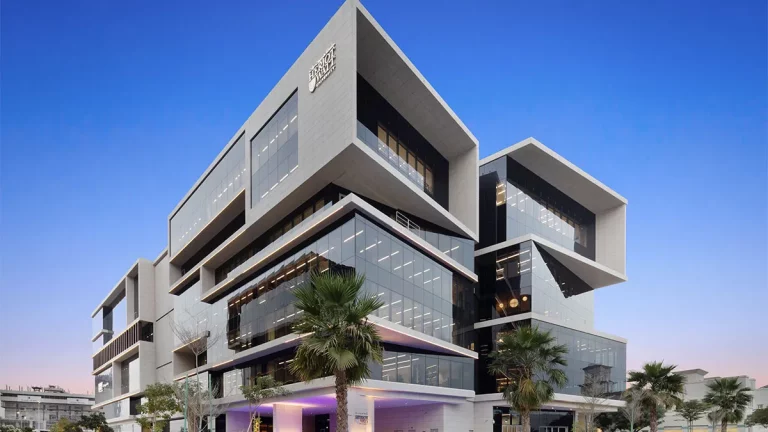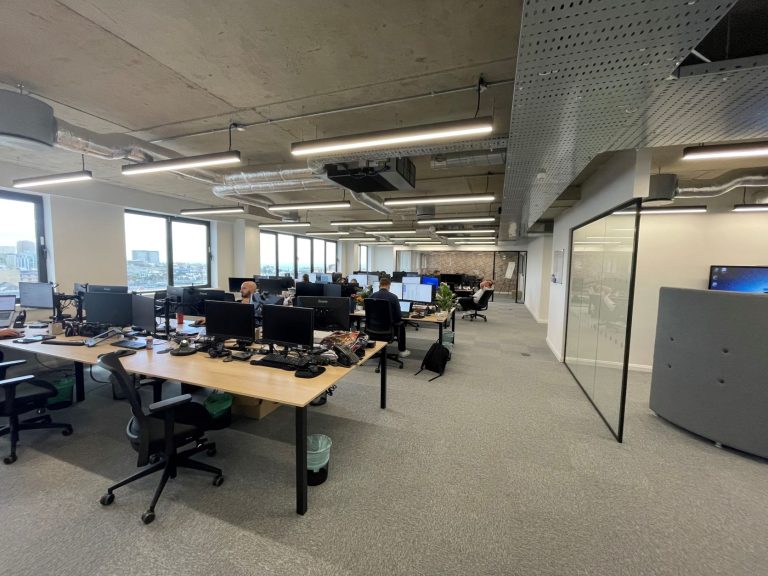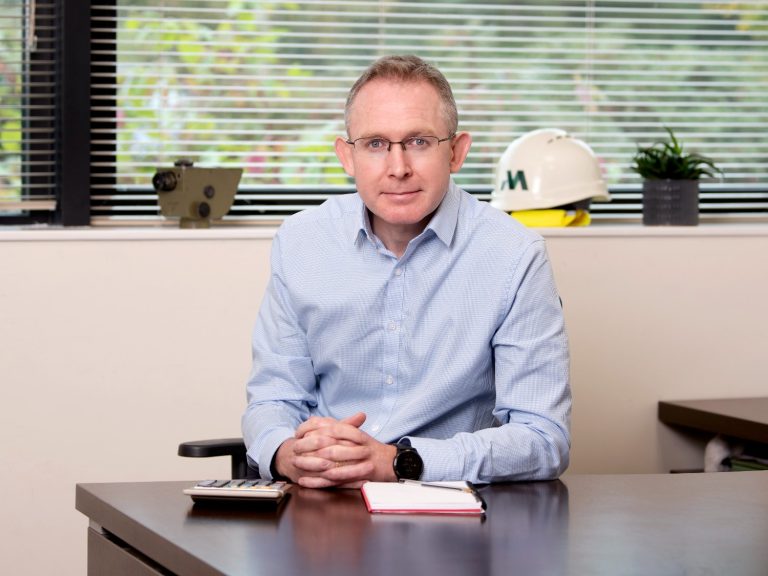Now in its 17th year, the Shaw Contract Design Awards programme is a chance to recognise the spaces that inspire new ways of living, working, learning, and healing through the design lens. Our 2022 Design Awards programme had almost 600 entries submitted from 44 countries around the world. All projects entered proceeded to the first stage of judging; where an elite panel of industry design leaders collaborated in each region to select the first ever “Best of Region” winners in the history of the Awards. We are delighted to announce that “Best of Region – UK & Continental Europe” are: BLOC Manchester, UK by Bruntwood Works The Judges said: “A beautiful project which considers the strong points and particularities of the building. A very considered approach that is not overdone.” McCANN OFFICES, Bucharest, Romania by Corvin Cristian Studio The Judges said: “This project plays with very a narrow range of colours, but they are very nicely placed… love the colour scheme and the use of materials, the break in the interior and the innovative use of materials.” RAISELAB, Paris, France by Label Experience The Judges said: “The use of materials andthe colours palette that they used is very good and it complements the industrial look and concrete… with a strong sustainability story.” The “Best of Region – UK & Continental Europe” Judging Panel, to which Shaw Contact EMEA extends a special thanks, consisted of: Raymond Chu, Associate Director at KKS-Savills, London, UK; Jelena Marjanovic – Project Manager at Archimage, Paris, France; Ida Kiss, Design Director at DVM Group, Budapest, Hungary; and Tatu Ahlroos, Interior Architect at SARC Architects and President-elect International Federation of Interior Architects/Designers, Helsinki, Finland. Overall, in the 2022 Awards, 37 projects were selected as Best of Region winners across the following judging panels: Best of Asia, Best of Australia & New Zealand, Best of Canada, Best of Greater China, Best of India, Best of Latin America, Best of Middle East & Africa, Best of UK & Continental Europe, and Best of USA. Each Best of Region winner will now proceed to the next stage of judging, where a panel of international Design leaders will award our Best of Globe winners. Best of Globe winners will be announced October 2022. About the programme Each entry was reviewed to select the projects that represent the very best of design from each region, using the following criteria: Design process – clarity surrounding the design intentions and execution Holistic thinking – creating a space for all types of users for today and in the future Sustainable thinking – for people and planet Shaw Contract’s vision is to celebrate the optimism of design, and its ability to influence our everyday lives. Together, we continue to create experiences that make a positive impact for people and the planet. For more information, please go to shawcontract.com Best of Region around the globe Other Best of Region winners were: Asia Citi Wealth Hub by Ministry of Design Pte Ltd | Singapore GAME FREAK Office by CANUCH Inc. | Japan Hilton Singapore Orchard by Avalon Collective | Singapore Microsoft office by UNION ARCHITECTS | Vietnam Nestle Jakarta by M. Moser Associates | Indonesia Australia and New Zealand Dandelion by MJA Studio | Australia EY Melbourne by Gensler | Australia IGO by Rezen | Australia Parmelia Hilton by Cox Architecture | Australia The Central/ Naumi Hotels by Undercurrent Studio | New Zealand Canada Bill and Helen Norrie Library by LM Architectural Group | Canada CBRE by Shearer Design | Canada Central Park Presentation Pavilion by II BY IV DESIGN | Canada Geddes/Zimco by Kasian Architecture, Interior Design and Planning | Canada Greater China Fund Office, 55th Floor, East Tower, Guangzhou by Guangzhou Inspiration Group China Guangzhou Yu Zhu Harbor by JAMES LIANG & ASSOCIATES LIMITED | China Hang Lung Group by iDA Workplace | China The Executive Centre by Fiona Hardie ID | Hong Kong Zonkd by Space Matrix | China India Bain Capital by M Moser Associates | India Browserstack by Space Matrix Design Consultants Pt Ltd | India Nvidia by DSP Design Associates | India Standard Chartered Bank – RMZ EcoWorld by M Moser Design Associates | India TAJ Lakefront – Bhopal by JOI-Design | India Latin America Hotel NODO by OARQUITECTOS | Chile Perkins&Will Estudio Monterrey by Perkins&Will | Mexico PwC by Athié Wohnrath | Brazil Sede Insole Energia by Mobio Arquitetura | Brazil Viasat by Pitá | Brazil Middle East & Africa African Guarantee Found by Symbion Kenya Limited | Kenya UAQ FTZA Headquarters | Dubai, UAE Pharma Innovator | Dubai, UAE USA Crystal Clinic Orthopaedic Center by HGA | United States Sheraton Denver Downtown Hotel by Gensler | United States












